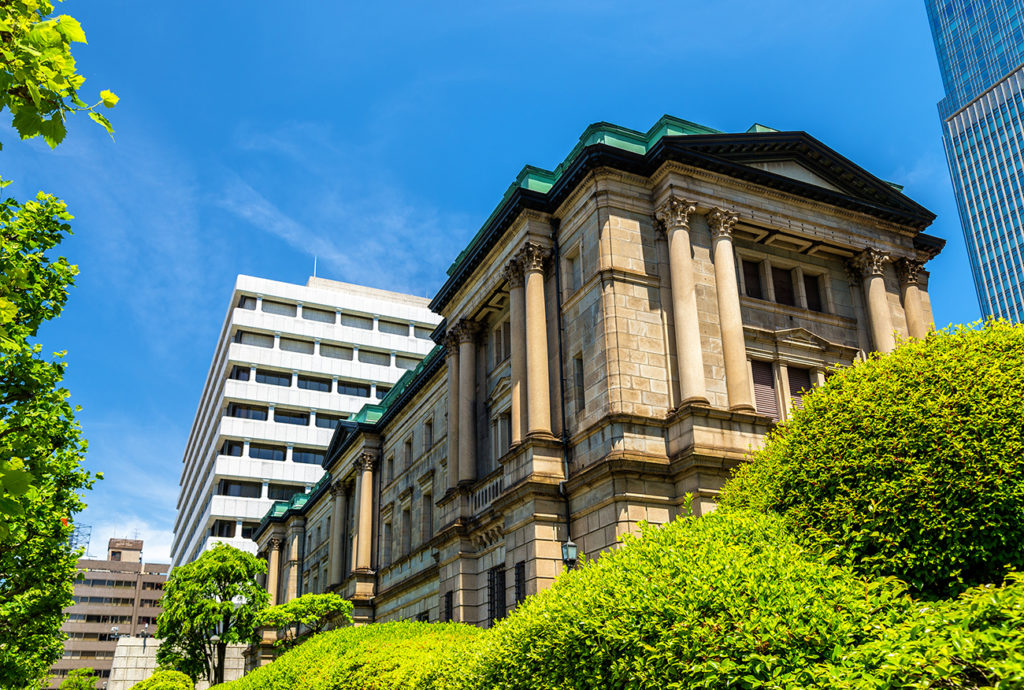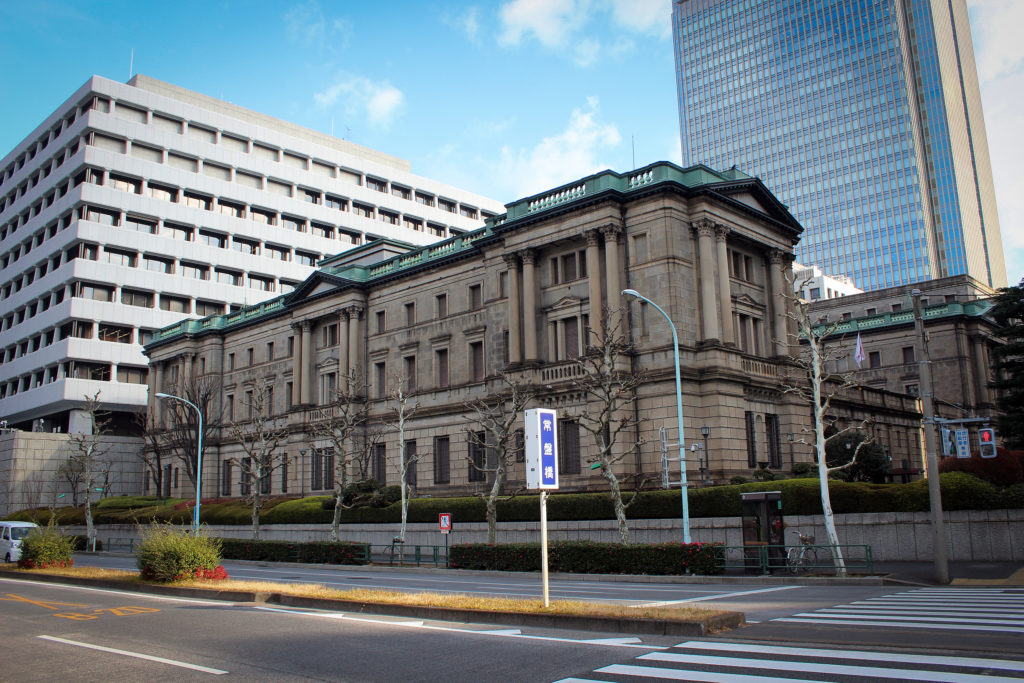
Historical Sites: Bank of Japan
The roots of monetary currency began before the 8th century in Japan and took the form of arrowheads, gold powder, and rice grains. Japanese coinage was inspired by the Chinese Tang coinage, Kaigentsūhō (Kai Yuan Tong Bao in Chinese). The first Japanese formal currency system was Kōchōsen (“Imperial currency”). The Wadōkaichin, or Wadō-kaihō, is the oldest official Japanese coinage minted as early as 708 CE on the orders of Empress Gemmei.
Bank of Japan
Japan’s financial system is similar to those of other industrialized nations. The Bank of Japan is a tool that implements the monetary policy. The Bank of Japan (Nippon Ginkō), or Nichigin, is the country’s central bank with headquarters in Chūō, Tokyo. The institution was founded after the Meiji Restoration. During the previous eras, all of Japan’s feudal fiefs issued their own money (hansatsu).
 The New Currency Act of Meiji4 (1871) established the yen as the new decimal currency replacing all the others. The fiefs became prefectures and their mints became private chartered banks which were initially allowed to print money. For some time, both the central government and the “national” banks issued Japanese currencies. This ended when the Bank of Japan was founded in Meiji 15 (October 10, 1882), under the Bank of Japan Act 1882 (June 27, 1882), after a Belgian model. The institution was granted a monopoly on controlling the supply of money in 1884.
The New Currency Act of Meiji4 (1871) established the yen as the new decimal currency replacing all the others. The fiefs became prefectures and their mints became private chartered banks which were initially allowed to print money. For some time, both the central government and the “national” banks issued Japanese currencies. This ended when the Bank of Japan was founded in Meiji 15 (October 10, 1882), under the Bank of Japan Act 1882 (June 27, 1882), after a Belgian model. The institution was granted a monopoly on controlling the supply of money in 1884.
The headquarters of the Bank of Japan in Tokyo was the site of the former gold mint or the Kinza. It is close to the famous Ginza district whose name means “silver mint.” The Bank of Japan building was built in the style of Neo-baroque architecture popular in the 19th century and was designed by Tatsuno Kingo (October 13, 1854 – 25 March 1919), in 1896. Tatsuno is also known for conceptualizing the Marunouchi building of Tokyo Station (1914). The architectural style of the Bank of Japan displays aspects of the Baroque features of the 17 and 18th centuries.

